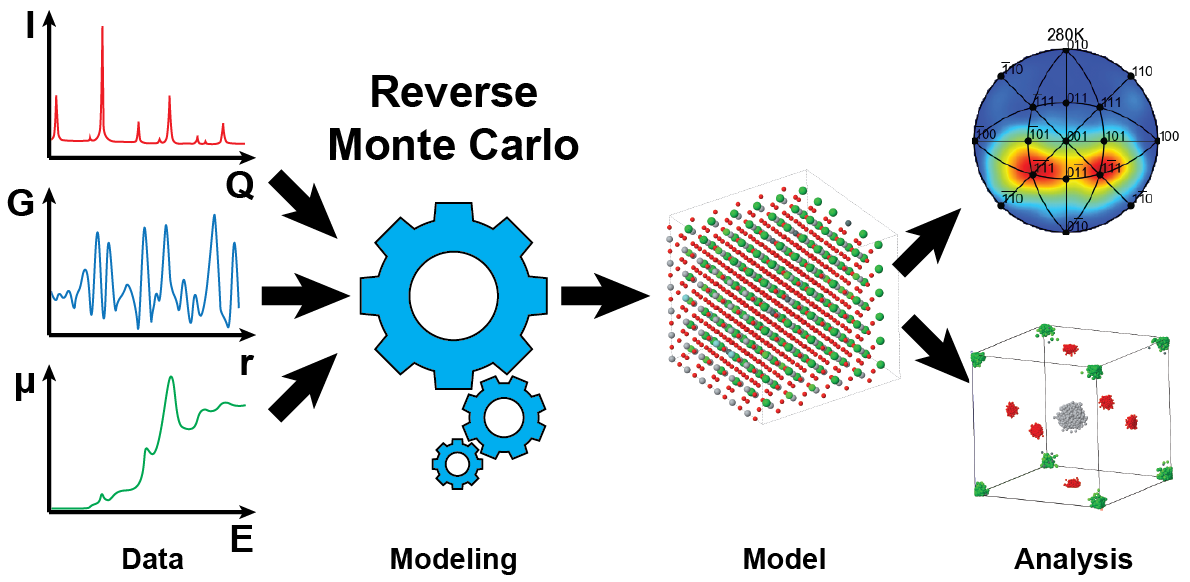One of the intriguing features of relaxor piezoelectrics is that their local structure observed e.g. via total scattering and pair distribution function analysis isn’t always the same as found when applying conventional crystallographic techniques.
Together with A. Pramanick’s group at CityU in Hong Kong we have been using big box modeling to study a range of doped (Ba,Ca)(Zr,Ti)O3 ceramics. Here we use a reverse Monte Carlo approach to model a large box of atoms (often more than 10000 atoms) to study local correlations and deviations from the long range average crystal structure.

While commissioning the first PXRD instrument at DanMAX we are finalizing the design of another instrument.
This instrument will utilize a large microstrip detector and is optimized to collect very high resolution PXRD data.
Together with the team at MAX IV we are working on automated and live data reduction of the area detector data and want to develop robust descriptors for data quality, potentially with feedback to the experiment.
Using neutron reflectivity we are studying the exciting properties of so-called sponetelectric films. These films are composed of small polar molecules grown in situ under (ultra) high vacuum and cryogenic conditions and develop large electric potentials inside the film.
Using this technique, we have studied phase transitions and diffusion within the films.